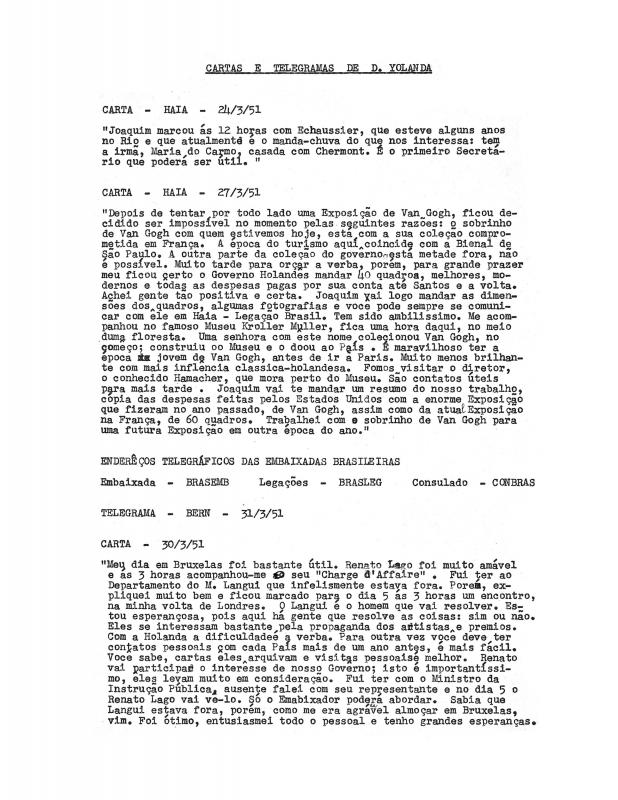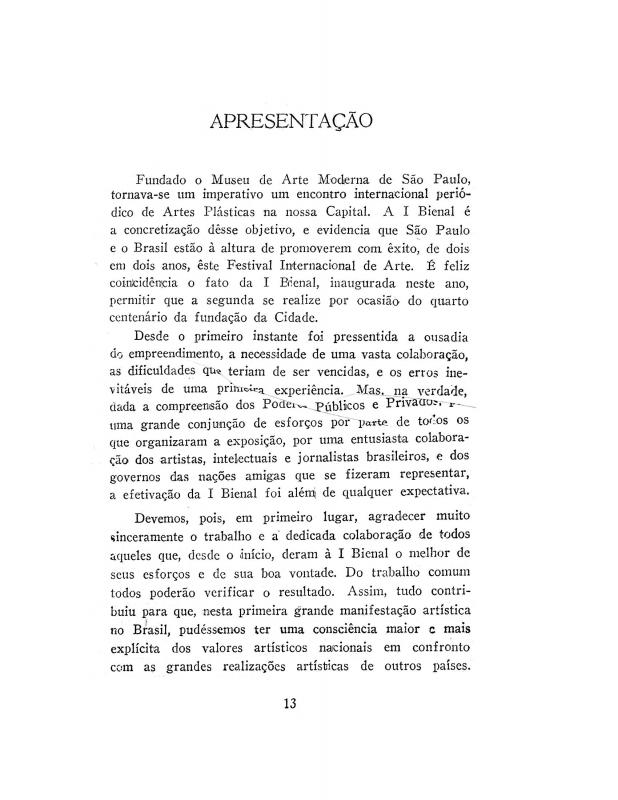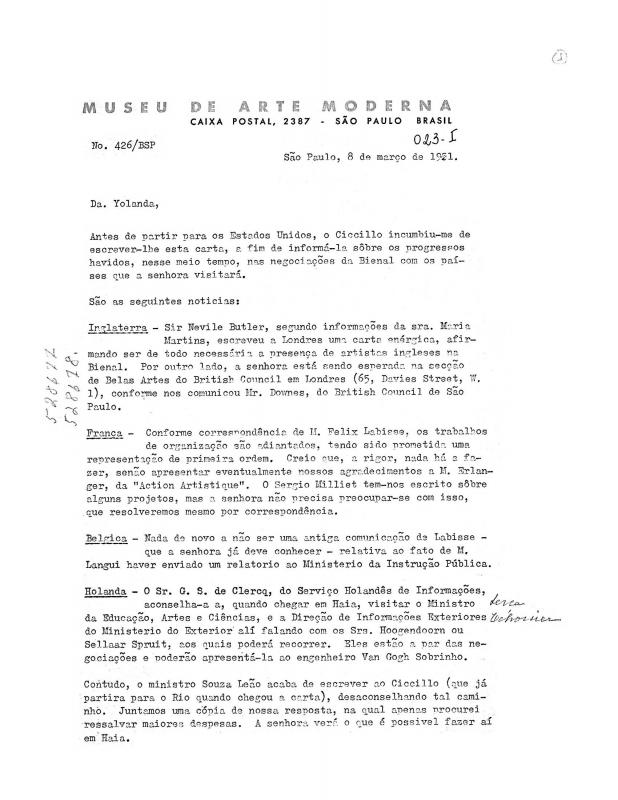In this text published during the opening of the first edition of the São Paulo Biennial, critic Mário Pedrosa provides a pioneering analysis of the Aparelhos Cinecromáticos series by Abraham Palatnik (b. 1928), placing that work in historical context. Innovative at the time, Palatnik’s piece made use of then-new technology. Palatnik was born in Natal in the state of Rio Grande do Norte; after studying for many years in what was then Palestine, he settled in Rio de Janeiro, where he formed part of the Grupo Frente led by Ivan Serpa (Pedrosa’s thinking was close to that group—one of the first to do research in abstract and constructivist art in Brazil). In the articles he published in the press in those years, Pedrosa was a staunch defender of abstraction as well as one of its leading voices. This text, then, supports the use of recent technologies as well as art that challenges traditional categories.
[For further reading, see in the ICAA digital archive the following texts: Fernando Cerqueira Lemos’s “Bienal quando nasce é para todos” (doc. no. 1110908); Yolanda Penteado’s “Cartas e telegramas de D. Yolanda” (doc. no. 1110831); and Lourival Gomes Machado’s “Apresentação” (doc. no. 1110834), and “Carta de Lourival Machado a D. Yolanda” (doc. no. 1110824)].
Intellectual and politician Mário Pedrosa (1900–81) was unquestionably the pivotal figure in 20th-century Brazilian art theory and criticism. He began as an international politics correspondent for the Diário da Noite. He joined the Brazilian Communist Party (PCB) in the 1920s, and in 1932 he was arrested for his political activism as a Trotskyite. During the Estado Novo under Getúlio Vargas, Pedrosa lived in exile in France and New York, returning to Brazil after World War II. A contributor to Correio da Manhã, he later founded the weekly Vanguarda Socialista due to his anti-Stalinist position. For his doctoral thesis in aesthetics, entitled “Da natureza afetiva da forma na obra de arte” (1949), presented at the Faculdade de Arquitetura (Rio), he made use of his background in philosophy and Gestalt psychology. He was one of the founders of International Association of Art Critics (AICA) (1948) and he helped organize the International Congress of Art Critics (Brasilia, 1959). From 1950 to 1954, he wrote a column on art for Tribuna da Imprensa and, in that decade, he was a member of the organizing committee for the 2nd and 3rd editions of the São Paulo Biennial (1953 and 1955 respectively) before becoming the director of MAM-SP from 1961 to 1963. He was the Secretary of the National Council of Culture during Jânio Quadros’s brief term as president. During the military dictatorship in Brazil, he sought exile in Chile where he directed the Museo de la Solidaridad in Santiago. After the coup under Pinochet (1973), he went to Havana where he was the secretary of the Museo de la Resistencia Salvador Allende. He did not return to Brazil until 1977, at the beginning of the amnesty. In 1980, he was the first person to sign the manifesto founding the Partido dos Trabalhadores (PT). Part of his vast library (some eight thousand volumes) is available at the Biblioteca Nacional in Rio de Janeiro.



